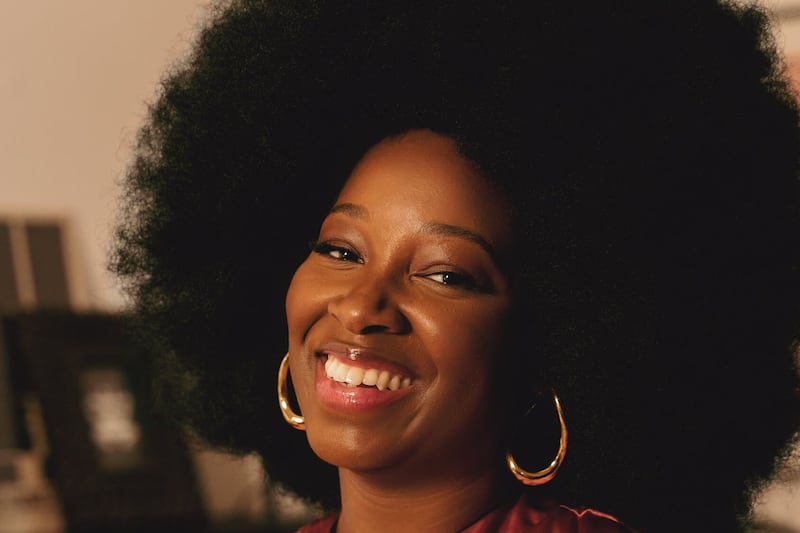The fashion industry’s efforts to improve its diversity has become more and more visible in recent decades.
From Naomi Campbell’s meteoric rise in the Nineties, to Edward Enninful becoming the first black person to serve as editor-in-chief at British Vogue – to Virgil Abloh becoming Louis Vuitton’s first black creative director in 2018.
It is no question that black creatives have been integral in shaping the fashion industry, yet quite rightly, many feel that there’s still a way to go before true equality is achieved.

In honour of Black History Month, we hear from designers Rainy Womack and Emile Vidal Carr, alongside fashion lecturer, Stefan Efobi, about the progress, legacy and provocations black creatives still face within the industry today.
The legacy of black fashion
“The history of black fashion is deeply intertwined with African heritage, cultural resilience, and the navigation of systemic barriers,” says Efobi, Lecturer in Fashion Design at Nottingham Trent University.
“Historically, many black designers have used textiles as a medium for storytelling and its ability to tell new stories.
“In contemporary knitwear, designers like Grace Wales Bonner are infusing Black cultural narratives into knitted garments, merging craft with identity.”

Bonner’s work often transports us back to historic cultural moments, such as her BA graduate collection that evoked 1970s Lagos. “The blend of historical references and luxurious materials reflects how black designers are weaving cultural heritage into modern knitwear, linking the past and present,” explains Efobi.
In UK fashion, the post-Windrush generation played a key role in bringing vibrant Caribbean and African styles to British street style, particularly in the Seventies and Eighties, explains Efobi.
“Joe Casely-Hayford was a pioneer, blending British tailoring with African-inspired prints and gaining recognition for his work with cultural icons like Michael Jackson, Princess Diana and The Clash.”

“Today, designers like Martine Rose continue this legacy, integrating their heritage into collections that challenge conventional ideas about fashion.”
Progress or tokenism? The fight for authentic representation
Despite the increase in visibility of Black designers, many today are sceptical as to which actions are truly sincere.
Emile Vidal Carr, a fashion designer with over two decades in the field says, “I don’t think the industry has come that far in terms of racial diversity. There are a few British fashion institutions out there, but I don’t think that they do a great deal for racial diversity as they might think.”
Carr’s own experiences underscore the visible challenges. “When I used black models, buyers labelled my designs as ‘urban’,” he recalls, a subtle but persistent racial bias that has sometimes confined his work to narrow categories.
For Rainy Womack, the US designer behind the label Tell The Truth, the barriers are more about access. “I encountered people with connections and resources who didn’t want to help,” he says.
Womack had to build his brand through social media and fashion shows, while buyers often ignored his work. Though he sees some improvement with figures like Pharrell Williams taking on roles at major league fashion houses like Louis Vuitton, he believes opportunities remain out of reach for many.
“Buyers could be turning down the next big thing without even knowing it,” Womack notes, “and designers like myself don’t forget how we’re treated when we’re trying to break through.”
For Carr, it comes down to business-savvy knowledge. “I feel that the topic of business acumen needs to be vocalised a bit more,” he explains, “A lot of the time, this can trump the design process.”

“I don’t necessarily believe that black designers have to work twice as hard as their counterparts,” Carr proceeds to say, “but I do believe that they need to find a way of working differently from their peers and stick to that regardless of what the current trend might be as that is what will provide them with longevity in the industry.”
Models for sustainable and traditional fashion
Black designers are not only pushing for visibility – they are also reshaping the conversations around sustainability.
Efobi highlights designers like Kenneth Ize, who weave traditional Nigerian techniques into their work, collaborating with artisans and championing cultural preservation. “It’s about more than beautiful garments,” Efobi says. “It’s about honouring tradition and supporting communities.”
Aurora James, the creative director of Brother Vellies, is another designer leading this charge, focusing on ethical production and using recycled materials.
“She’s committed to sustainable production, often using recycled materials and employing artisans from around the world, particularly from Africa,” Efobi states.
“Her work challenges the idea that luxury fashion must come from exploitation or environmental harm.”
The future of fashion
The reflections of Efobi, Carr and Womack highlight the challenges regarding diversity within the industry. Whilst visibility for black creatives is slowly improving, the question of authenticity and tokenism remains an unsettling one for many.

“Fashion should be about people expressing themselves freely and dressing how they feel without rules or limits,” Womack says, and it’s time the industry lived up to that promise.








